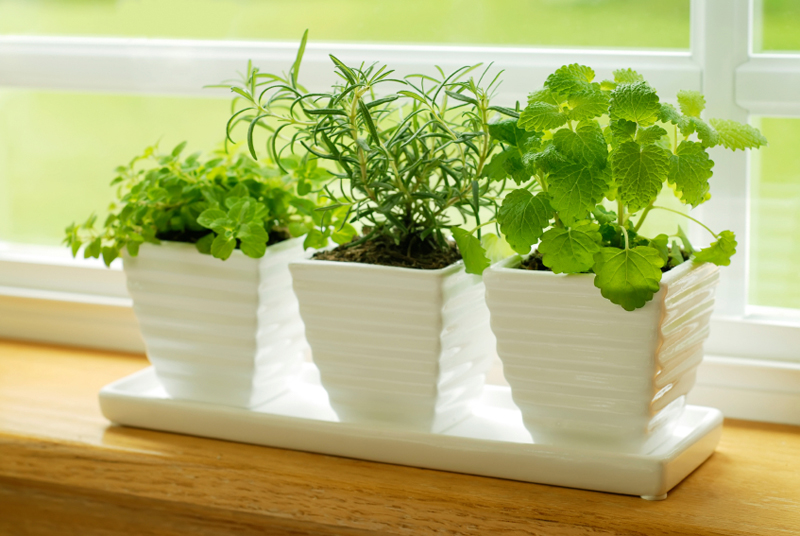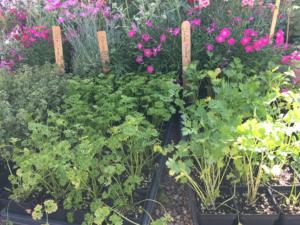Blackjack Herbs
When the Unlawful Internet Gambling Enforcement Act (UIGEA) became a reality in 2006, Blackjack Herbs it changed the online casino USA industry. Fortunately for American casino fans regulation is on its Blackjack Herbs way, and if you live in a regulated state you have plenty of options. Blackjack (mutsine/umhlabqngubo/ucucuza) is one of the most commonly found herb that is quite underrated. I believe its largely due to people’s ignorance of the value of this plant. The plant grows freely throughout the year and is quite often seen as an annoying “weed” by many people.
4-5 Servings~ 15 min- 1 bunch tsine (blackjack leaves), chopped
- 1 large tomato, chopped
- 1 medium onion, chopped
- 250 ml boiling water
- 1/2 tsp salt
- 3 tbsp oil
Growing up, my mum made tsine (blackjack leaves) for my siblings and I. Being kids, we used to despise it! Despite her telling us how healthy it is. I guess the fact that we would see her picking it from the garden or around the yard, our minds already registered that they were “masora” (weeds), so they couldn’t possibly be food! Fast forward to when I was older and tried the dried version and loved it, surprisingly so did my kids! I went ahead and did the fresh version and everyone loved it too!
Blackjack leaves are very high in fibre, which among many other things help with the management of diabetes, maintaining a healthy heart (avoiding cardiovascular diseases) and maintaining a healthy digestive system. So go on right ahead and try this recipe out.
[wp_ad_camp_1]
/bidens_pilosa69.jpg)
Get This
- Medium sized pot
- Wooden spoon
- Chopping board
- Sharp knife
Do This
- Get your ingredients together. These include; 1 bunch tsine (blackjack leaves), chopped
1 large tomato, chopped
1 medium onion, chopped
250 ml boiling water
1/2 tsp salt
3 tbsp oil - Put boiling water in pot. Add the blackjack leaves. Boil for 5 min then drain the water,reserving just a tablespoon.
- Put the blackjack leaves back into the pot. Add the tomatoes, onions, salt, oil and reserved water. Allow to simmer until the tomatoes and onions are cooked through.
- Taste for seasoning and adjust accordingly. Enjoy!
Blackjack Herbs Meaning
[wp_ad_camp_3]
| Bidens pilosa | |
|---|---|
| Scientific classification | |
| Kingdom: | Plantae |
| Clade: | Tracheophytes |
| Clade: | Angiosperms |
| Clade: | Eudicots |
| Clade: | Asterids |
| Order: | Asterales |
| Family: | Asteraceae |
| Genus: | Bidens |
| Species: | |
| Binomial name | |
| Bidens pilosa L. 1753 | |
| Synonyms[1] | |
| |
Bidens pilosa is an annual species of herbaceous flowering plant in the daisy family Asteraceae. Its many common names include black-jack, beggarticks, farmer’s friends and Spanish needle, but most commonly referred to as cobblers pegs. It is native to the Americas but is widely distributed as an introduced species in other regions worldwide including Eurasia, Africa, Australia, South America and the Pacific Islands.[2]
Description[edit]
Bidens pilosa is a branched annual forb of gracilehabit, growing up to 1.8 meters tall. It grows aggressively on disturbed land and often becomes weedy. The leaves are all oppositely arranged and range from simple to pinnate in form, the upper leaves with three to five dentate, ovate-to-lanceolate leaflets. The petioles are slightly winged.[3]
The plant may flower at any time of the year, but mainly in summer and autumn in temperate regions. The flowers are small heads borne on relatively long peduncles. The heads consist of about four or five broad white ray florets (ligules), surrounding many tubular yellow disc florets without ligules that develop into barbed fruits.[4]
The fruits are slightly curved, stiff, rough black rods, tetragonal in cross section, about 1 cm long, typically with two to three stiff, heavily barbed awns at their distal ends.
The infructescences form stellate spherical burrs about one to two centimeters in diameter. The barbed spines of the achenes get stuck in the feathers, fur, fleeces, clothing, etc. of people or animals that brush against the plant.[5][6] It is an effective means of seed dispersal by zoochory, as the fruits are transported by animals. This mechanism has helped the plant become a noxious weed in temperate and tropical regions.[3][7] The barbed awns can injure flesh.[citation needed]
Distribution[edit]
The species is native to tropical America, widely naturalized throughout the warm temperate and tropical regions of the world.[8][9] A weed of gardens, woodlands, and waste areas.[10][11][12]
Common names[edit]
Its many English common names include black-jack,[13]:819 beggarticks, hairy beggarticks, cobbler's pegs, devil's needles, hairy bidens, Spanish needle, farmers friend, Devils Pitchfork, and sticky beaks.[14][15][2][16][17]

Uses[edit]
Although Bidens pilosa is primarily considered a weed, in many parts of the world it is also a source of food and medicine.[18] The leaves have a resinous flavor, and are eaten raw, in stews, or dried for storage. It is especially important in eastern Africa, where it is known as michicha.[19]
In Vietnam, during the Vietnam War, soldiers adopted the herb as a vegetable, which led to it being known as the 'soldier vegetable'.[20]It is susceptible to hand weeding if small enough, even then must be bagged, and thick mulches may prevent it from growing.[21][22]
In traditional Chinese medicine, this plant is considered a medicinal herb, called xian feng cao (Chinese: 咸豐草).[citation needed]. In traditional Bafumbira medicine, this plant is applied on a fresh wound and is known to be a medicinal herb, called inyabalasanya.[citation needed]Extracts from Bidens Pilosa are used in Southern Africa to cure malaria.[23]
Chemistry[edit]
Almost two hundred compounds have been isolated from B. pilosa, especially polyacetylenes and flavonoids.[24] The plant contains the chalconeokanin[25] and ethyl caffeate, a hydroxycinnamic acid.[26]
Extracts of B. pilosa suppressed the growth of isolated adult T-cell leukemia cells in vitro.[27]
Blackjack Herbicide
See also[edit]

References[edit]
Blackjack Herb

- ^The Plant List, Bidens pilosa L.
- ^ abBidens pilosa. Pacific Island Ecosystems at Risk (PIER). USFS.
- ^ abFlora of North America, Bidens pilosa Linnaeus, Sp. Pl. 2: 832. 1753.
- ^'Spanish needles: definition of Spanish needles in Oxford dictionary (American English) (US)'. www.oxforddictionaries.com. Retrieved 2016-02-11.
- ^'Plant Discoveries Sherwin Carlquist Island Biology LOSS of DISPERSIBILITY on ISLANDS'. www.sherwincarlquist.com. Retrieved 2016-02-11.
- ^'beggarticks: definition of beggarticks in Oxford dictionary (American English) (US)'. www.oxforddictionaries.com. Retrieved 2016-02-11.
- ^Multimedia, Acura. '*Bidens pilosa — Noosa's Native Plants'. noosanativeplants.com.au. Retrieved 2016-02-11.
- ^'Bidens pilosa (Blackjack)'. BioNET EAFRINET Keys and Factsheets. Retrieved 2020-03-25.
- ^'Factsheet - Bidens pilosa'. keyserver.lucidcentral.org. Archived from the original on 2016-03-05. Retrieved 2016-02-11.
- ^'Bidens pilosa - Cobbler's Pegs - Edible Weeds and Bush Tucker Plant Foods'. www.survival.org.au. Retrieved 2016-02-11.
- ^'Dangars Falls and Salisbury Waters'. www.donsmaps.com. Retrieved 2016-02-11.
- ^'Elizabeth and Rob'. elizabeth-nowell.blogspot.com.es. Retrieved 2016-02-11.
- ^Stace, C. A. (2019). New Flora of the British Isles (Fourth ed.). Middlewood Green, Suffolk, U.K.: C & M Floristics. ISBN978-1-5272-2630-2.
- ^'BSBI List 2007'. Botanical Society of Britain and Ireland. Archived from the original(xls) on 2015-01-25. Retrieved 2014-10-17.
- ^'Wilderness Survival, Tracking, and Awareness'.
- ^'Bidens pilosa in Flora of North America @ efloras.org'. www.efloras.org. Retrieved 2016-02-11.
- ^Atlas of Living Australia, Bidens pilosa L., Cobbler's Peg
- ^Grubben, G. J. H. & O. A. Denton. (2004) Plant Resources of Tropical Africa 2. Vegetables. PROTA Foundation, Wageningen; Backhuys, Leiden; CTA, Wageningen.
- ^Pieroni, Andrea (2005). Prance, Ghillean; Nesbitt, Mark (eds.). The Cultural History of Plants. Routledge. p. 31. ISBN0415927463.
- ^Tanaka, Yoshitaka; Van Ke, Nguyen (2007). Edible Wild Plants of Vietnam: The Bountiful Garden. Thailand: Orchid Press. p. 38. ISBN978-9745240896.
- ^'Sustainable Horse Keeping'. goldcoasthorse.com.au. Archived from the original on 2015-12-08. Retrieved 2016-02-11.
- ^Vegetables. Grubben, G. J. H., Plant Resources of Tropical Africa (Program). Wageningen, Netherlands: Backhuys. 2004. ISBN90-5782-147-8. OCLC57724930.CS1 maint: others (link)
- ^Vegetables. Grubben, G. J. H., Plant Resources of Tropical Africa (Program). Wageningen, Netherlands: Backhuys. 2004. p. 115. ISBN90-5782-147-8. OCLC57724930.CS1 maint: others (link)
- ^Silva, F. L., et al. (2011). Compilation of secondary metabolites from Bidens pilosa. Molecules 16(2), 1070-1102.
- ^Presence of Compounds in Picao preto (Bidens pilosa). Raintree Nutrition.
- ^Chiang, Y., et al. (2005). Ethyl caffeate suppresses NF-κB activation and its downstream inflammatory mediators, iNOS, COX-2, and PGE2 in vitro or in mouse skin.Br J Pharmacol. 146(3) 352–63. PMID16041399
- ^Nakama, S., et al. (2011). .Anti-adult T-cell leukemia effects of Bidens pilosa.International Journal of Oncology 38(4), 1163-73. PMID21318218
External links[edit]
- PROTAbase Record display for Bidens pilosa. Plant Resources of Tropical Africa (PROTA). Retrieved on 12 April 2010.
Blackjack Herb Pictures
| Wikimedia Commons has media related to Bidens pilosa. |